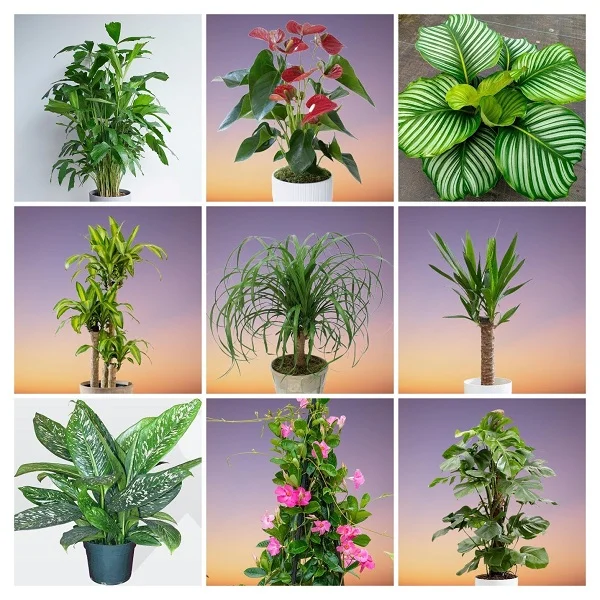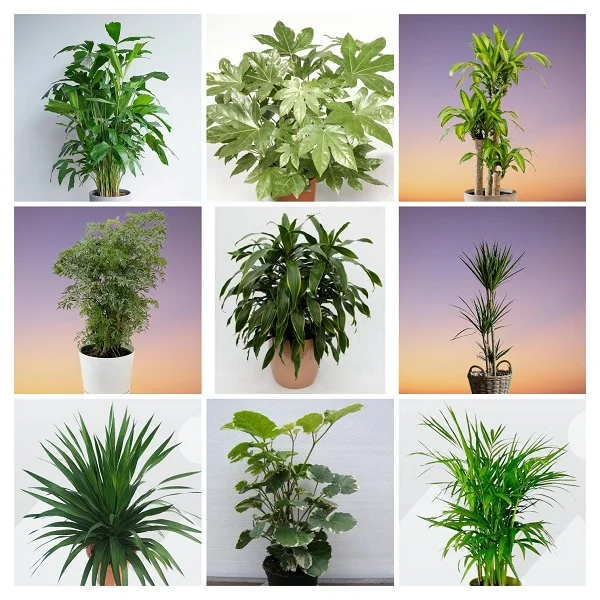Aralia balfouriana (Polyscias balfouriana) Indoor Care and Propagation Guide
Some links in this post may be affiliate links
Aralia balfouriana (Polyscias balfouriana) grows best in bright indirect light, warm and humid conditions and moderately moist, rich, well-drained soils coupled with monthly feeding in the growing season.
First, lets learn some facts about this plant. Polyscias balfouriana also called Dinnerplate Aralia, Balfouriana Aralia or Balfour Aralia Plant is among the popular tree-like plants and bears an abundance of attractive dark-green leaves and easily adapts to a wide range of growing conditions.
Dinnerplate Aralia needs good light, even moisture at the roots and high humidity especially where the temperatures are high. It will readily drop leaves if the growing conditions are not right.
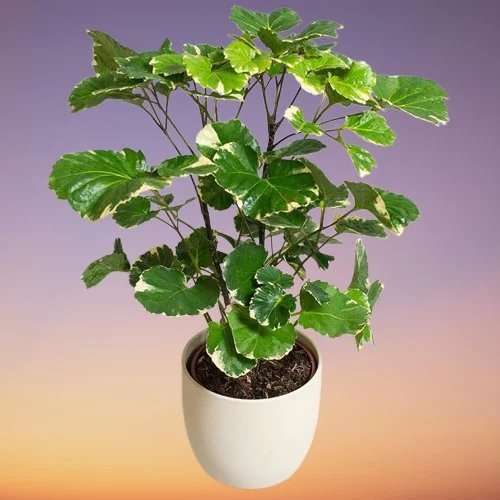
Botanical name: Polyscias balfouriana
Family: Araliaceae
Common names: Aralia balfouriana, Dinnerplate Aralia, Balfouriana Aralia, Balfour Aralia Plant, Balfour Aralia
Origin
Polyscias balfouriana has its origins in the regions of New Guinea to Queensland, Australia.
Size
Balfouriana Aralia can grow to a height of 8-12 feet and 2-3 feet wide in the tropical outdoors but for the container grown plant, height is controlled through regular pruning of the branch tips which also encourages bushyness.
Flower
In the tropical wild, Polyscias will produce a 6 inch long inflorescences but when grown indoors, flowering is unlikely.
Polyscias Varieties
Types of Polyscias that can be grown indoors include;
Polyscias scutellaria, commonly called Shield Aralia and
Polyscias fruticosa, commonly called Ming Aralia.
Toxicity
Aralia balfouriana is toxic to pets as outlined by ASPCA. It contains saponins which if ingested will cause swelling and burning in the mouth and throat, vomiting, diarrhea and abdominal pains.
Where to Buy
Dinnerplate Aralia are pleasant plants to add to your collection. You may acquire these plants online from Amazon (Link to Amazon) or from Etsy (Link to Etsy).
Aralia balfouriana Care Indoors
Balfouriana Aralia (Polyscias balfouriana) flourishes in bright indirect light (dappled light), average warmth of 15-270C, humidity of 60-70%. and moderately moist, fertile, well-drained, multi-purpose potting mix coupled with monthly feeding during the growing season.
Dinnerplate Aralia requires regular pruning to keep it neat, promote a bushy growth and rejuvenate growth. Repotting is needed every two years when it has outgrown its pot as it grows best when pot-bound. Let’s break down everything you need to know to keep your plant healthy and vibrant.
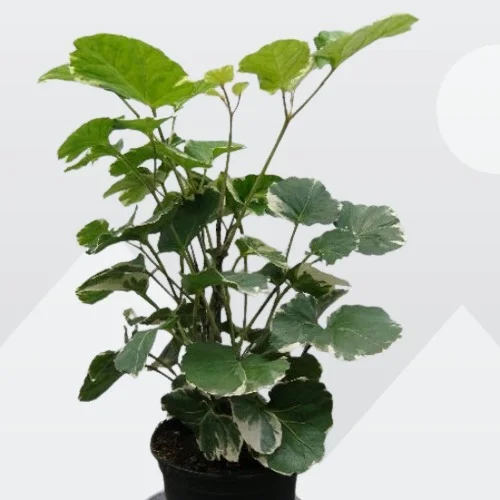
Watering
Water your Aralia balfouriana liberally during the growing season and allow the soil to dry out slightly between waterings to keep the soil moderately moist.
Decrease watering in the cold months as growth is minimal at this time and maintain the soil slightly moist but do not let the soil dry out completely. Never allow the soil to dry out completely as it may result in drooping or dry crispy leaf edges, slow growth and leaf drop.
Ensure that the pot has a drainage hole to prevent the soil from getting soggy as the plant does not like to sit in soggy soil as it can lead to root-rot; characterized by yellowing leaves, mushy stems or black roots and foul-smelling soil.
Light Requirements
Balfour Aralia grows best in bright indirect light (filtered light). Keep it away from direct sunlight to avoid scorching the leaves. However, it will adapt to light shade but will not grow in deep shade and may even die. Leaf drop is a sign of too little light.
Where the natural light is inadequate, you may grow Polyscias balfouriana under grow lights. Check out these full spectrum grow lights available on Amazon.
Regularly turn the pot to ensure that the plant receives light on all sides for uniform growth to prevent lopsided growth.
Temperature and Humidity
The best temperature for Aralia balfouriana is an average warmth of 15-270C with a minimum of 100C. Keep it away from cold drafts as it doesn't like cold temperatures which may result in reduced growth and death the plant.
To thrive, Balfouriana Aralia requires above average humidity of 60-70%. Low humidity can cause brown leaf edges and leaf drop. To increase humidity, set the pot on a wet pebble tray or use a cool mist humidifier. Learn more on how to raise humidity for houseplants.
Regularly clean the leaves by damp wiping them with a soft cloth to get rid of dust and reduce pest infestation. Ascertain that there is good air circulation to minimize fungal diseases.
Feeding
Feed your Balfour Aralia Plant monthly with a balanced water-soluble fertilizer during the growing season but do not feed in the cold season as growth is minimal at this time.
If your plant’s leaves turn yellow, flush out accumulated salts arising from fertilizers every 2-3 months. Do this by running a stream of water through the soil until the water comes out through the drainage holes. Let the stream of water run for a few minutes and repeat the process several times.
Potting Medium
The best potting mix for Aralia balfouriana should be light, well-draining to prevent it from getting soggy. It should also be rich in organic matter to provide the nutrients required for a lush growth. Most all purpose potting mixes are ideal for this plant.
Repotting
Repot your Balfouriana Aralia every two years only when they have outgrown the current pot as it grows best when root-bound. Use a pot one size larger than the current one. Ensure that the pot has a drainage hole to avoid getting soggy soil as it can lead to root-rot. Take a look at these self watering pots on Amazon.
Pruning
Pruning Aralia balfouriana requires pinching-back of the growing tips to encourage a bushy and compact growth. Remove yellow and dead leaves to keep the plant neat and also reduce pest and disease infestations. Cutback the overgrown plant with a clean pair of pruning scissors to rejuvenate growth.
Propagation
Polyscias balfouriana (Aralia balfouriana) propagation can be done at the beginning of the growing season from stem-tip cuttings or from hard-wood stem cuttings.
Aralia balfouriana propagation from stem cuttings
Take top 4-6 inches of the stem-tip cutting from a healthy Aralia balfouriana. You can also take about 6 inches hard-wood stem cutting.
Strip off most of the leaves from the bottom of the stem cutting. Retain at least 2-4 leaves on the cutting.
Dip the cut end in a rooting hormone to hasten rooting. Insert each cutting into a pot of moist sandy soil.
Cover the pots with clear plastic bag to create a humid atmosphere which enhances root development.
Place the set up in a warm, well-lit spot away from direct sunlight.
Note that the stem cuttings and newly propagated plants rot easily at the base and in the roots therefore do not mist the leaves and maintain the soil moist but not wet.
The cuttings will begin to root after a 4-6 weeks. You will know the cutting has rooted when you see new growth emerge.
Once rooting has taken place, gradually phase out the plastic bag covers.
Do not transplant the new plants as Polyscias balfouriana does not like to be disturbed. It is advisable to start the cuttings in pots with adequate room for the young plants.
Related content: How to propagate Polyscias fruticosa (Ming Aralia) in 3 Easy Ways.
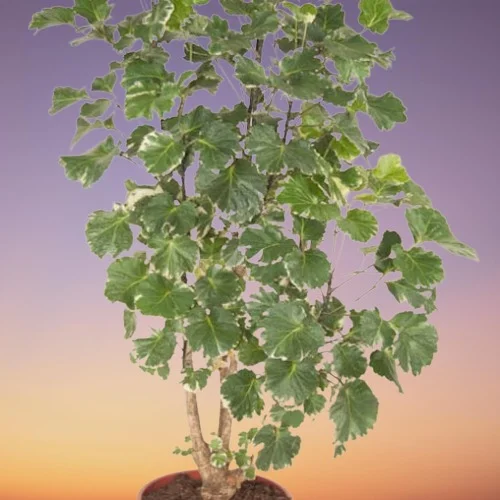
Aralia balfouriana Problems with Fixes
Aralia balfouriana (Polyscias balfouriana) growing problems include leaf drop, wilting, leaf spots, plant death, yellowing, pests and diseases among others. Keep reading for more on these problems and how to solve them.
Plant dying
Aralia balfouriana death is due to root-rot which is promoted by soggy soil (too wet soil) due to poor drainage. Ensure that the soil is well-drained and that the pot has a drainage hole to prevent the soil from getting soggy. Allow the soil to dry out slightly between waterings.
Yellowing and wilting leaves
Yellowing and wilting leaves in Balfouriana Aralia is an indication of root-rot which is promoted by soggy soil. To save the plant, take it out from its pot, clean off the soil from the roots and inspect the roots.
Cut away brown-black mushy roots and treat the remaining roots with a fungicidal solution. Clean and disinfect the pot with the fungicidal solution and repot the plant in fresh soil.
Keep it dry for a few days before beginning the regular watering. Ascertain that the soil is free-draining and that the pot has a drainage hole to avoid getting soggy soil in the future. Allow the soil to dry out slightly between waterings. Never allow the plant to sit in soggy soil.
Related: 15 Causes of Yellow Leaves in Indoor Plants and Their Fixes
Pests
The common pests in Aralia balfouriana are spider mites especially where air humidity is low or there is underwatering. Isolate the affected the plant and treat with an insecticidal solution.
To raise humidity and discourage future pest infestation, set the pot on a wet pebble tray or use a cool mist humidifier. Maintain the soil moderately moist and never allow the soil to dry out completely to discourage pest infestation.
Yellowish-green young leaves
Lack of nutrients due to underfeeding is the cause of yellowish-green young leaves in Balfouriana Aralia. The plant requires to be fed monthly with a balanced water-soluble fertilizer and the soil needs to be regularly flushed out of accumulated fertilizer deposits. Learn how to feed houseplants.
Dropping (shedding) leaves
Some leaf drop in Aralia balfouriana is normal. However, a sudden change in lighting will cause excessive leaf drop. Avoid sudden changes in the growing conditions and acclimate the plant gradually over a period of time before changing its position.
Brown leaf spots
Brown leaf spots in Balfouriana Aralia are caused by underwatering. The plant grows best in moderately moist soil. Never allow the soil-ball to dry out completely and maintain the soil moderately moist at all times.
Final thoughts
Polyscias balfouriana is a low-maintenance, elegant plant whose graceful foliage and upright growth, makes it a striking indoor plant. With the correct amount of light, watering, and occasional pruning, Aralia Balfouriana will reward you with lush, thriving greenery that lasts for years!
You liked it? Share on social media.
Related Content
Amazon Associates Disclosure
Homeplantsguide.com is a participant in the Amazon Services LLC Associates Program, an affiliate advertising program designed to provide a means for sites to earn advertising fees by advertising and linking to amazon.com.



